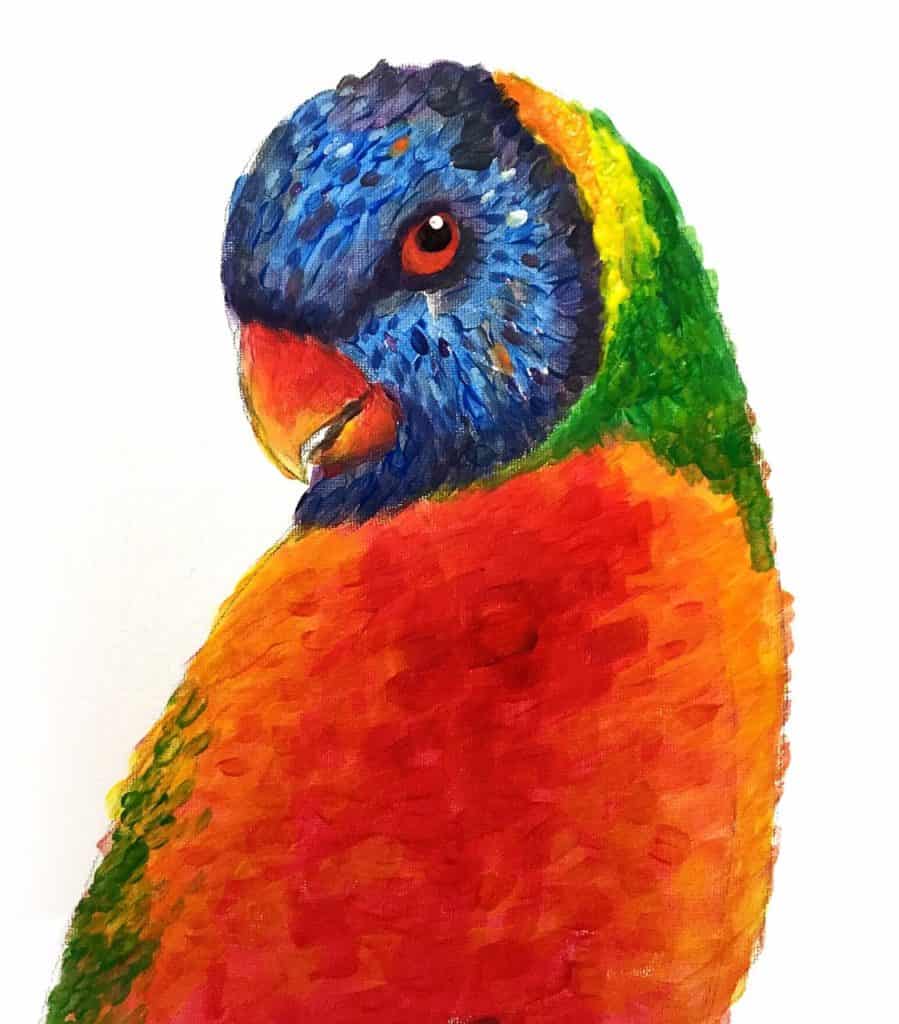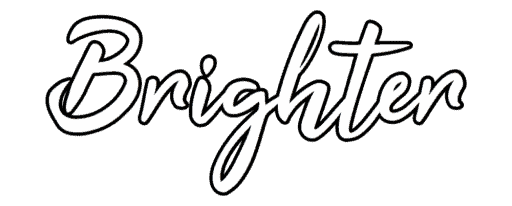Peach is made by mixing a yellow and a red. You can then use white to adjust the tone to get the exact color you want.
Mixing Peach or any other colors to get the exact tones you need can be difficult. When you start there are ways to help you understand how to achieve the perfect color. With practice it will get easier.
With oil paints and watercolors you can mix them on the paper or canvas as well as on your palette . Use a small blob of each color and a clean brush to mix the two colors together. Mix them until you have an evenly mixed color. Make sure you clean the brush before starting each time so there is no cross contamination of colors.
Because acrylics dry so much faster, you need to mix colors individually on your palette. Then paint the mixed color onto paper. Having a separate brush for each color can make this bit easier. Clean the brushes carefully each time they are used to stop unwanted contamination with other colors
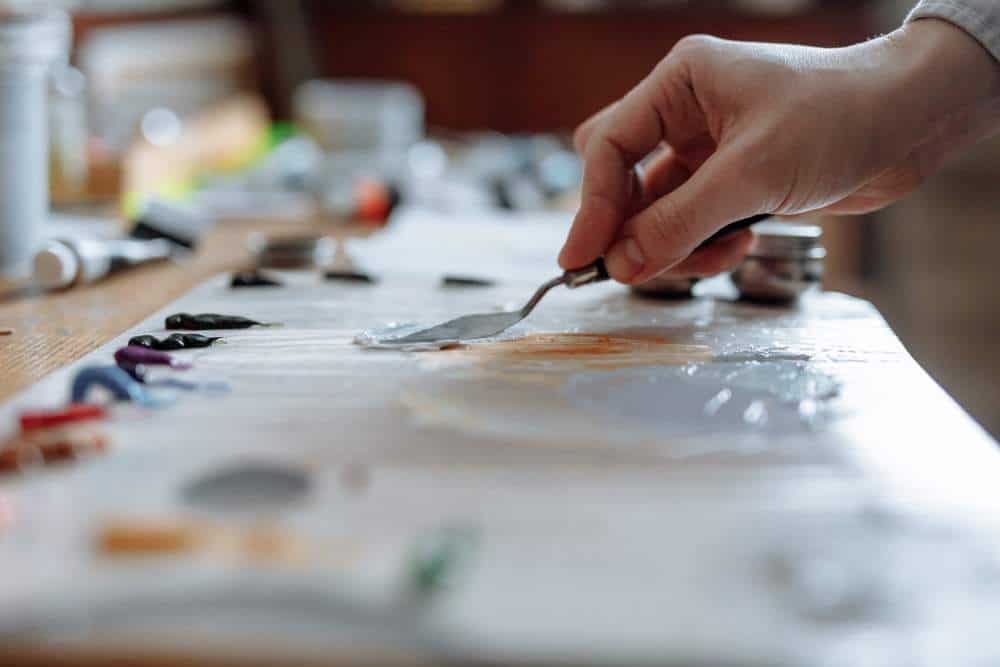
Table of Contents
Using a Color Wheel Or Creating a Color Chart Can Help
Creating a color wheel to refer to will help you understand hows colors relate to each other. Making a color chart will really help you get the color you want much more easily. As you learn how the colors interact it will become second nature. It may take a while at first but as your knowledge increases you will find it easier.
There is never just one way to mix any color. With making peach color paint if you use a cooler yellow you would need a little more red. However if you use a warmer yellow you would need a little less red.
Here Are Some Other Tips For You
Creating peach is a case of understanding proportion. Its easy to see that there is some yellow a little red and some white to lighten the tones. Choosing the right amount of each color will take practice, but once you start you will see the differences and it will get easier
If you want to create the lighter color of the flesh of a peach you should start with white. If you are trying to capture the color of the skin of a peach, start with a light yellow first.
I tend to use primary colors to mix the colors I want. This may need more than two colors. You can adjust the shade or tone with white or black. If you have a comprehensive choice of colors to hand it can be done with 2 colors.
I would suggest two colors and white to lighten the tones is the easiest way to get a peach tone. Start with a little cadmium yellow paint and some vermillion or even a small amount of cadmium red. Start with a blob of yellow and add the vermillion little by little. Gradually increase the amount of vermillion until you get the red tinted yellow we all recognise from peaches. Then add a little white at a time until you get the exact tone you want.
As you mix the white in, you may need to adjust the color by adding more yellow or vermillion. Just take your time and do it gradually until you get the exact tone you desire.
It Is All About Proportions
Start with a base color that you can then adjust tonally. Adding the right amount of white or darker colors to adjust the tones is vital. Do it slowly, a little at a time. Remember that even two people from the same family will never have exactly the same skin tone. Always consider the effect the light and the background has on the final picture too.

How to make the color peach with acrylic paint
To start with I would use cadmium red and lemon yellow along with zinc white. You will need to work fast when using acrylic paint so make sure you have everything you need close by. You can use a retarder to slow down the drying process but a little water should be enough. Only use clean water for mixing though. Keep another seperate container of water for cleaning your brushes.
Try to mix enough paint to complete what you are going to use. First I would use a good blob of the cadmium yellow with a similar amount of the zinc white. Add a little water and a small amount of the cadmium red. Mix them thoroughly but i do always try to leave a little of the unmixed colors at the edge of the mix.
Think about the different shades you meed and try to mix the color that will be used most. Add the cadmium red very slowly to get the right balance. If you need to then add a little more white to keep the tone light.
If you need to darken the tones, personally I try to avoid black. I quite often use a dark brown like burnt umber to get my darker tones. However, adding a little dark blue can achieve similar results, although you may need to add a little more red and yellow too.
Use the base color you have mixed to paint the bulk of the area you are painting. Then you can include a little of the white on the lighter areas and the dark brown to add shadows. This can be done by dry brushing or by using thin washes over the first layer of acrylic paint when it is dry.
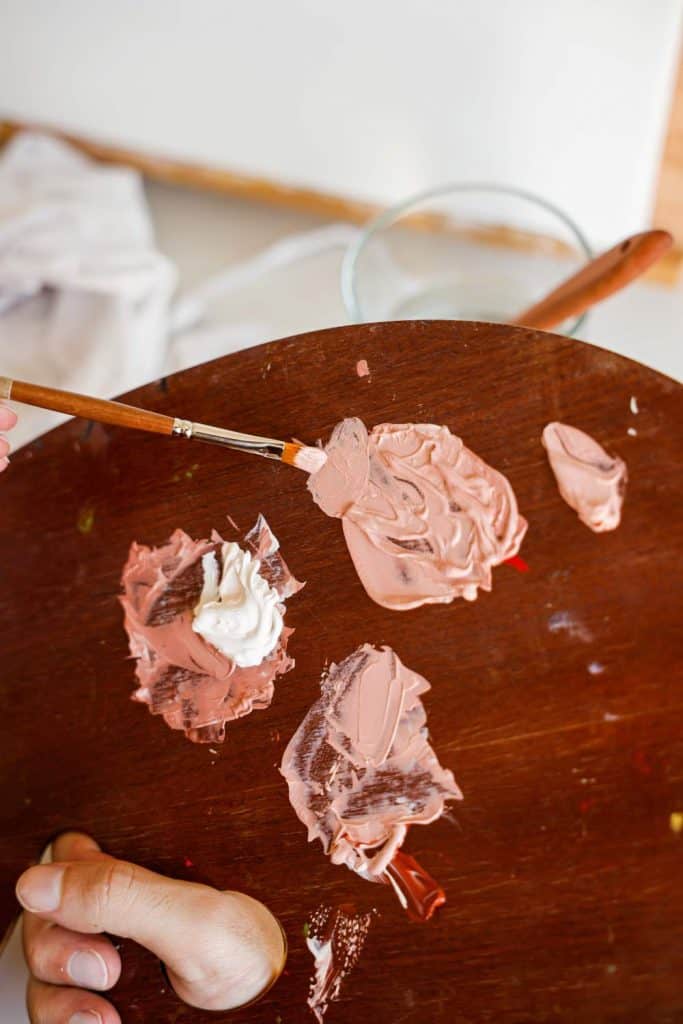
How to make the color peach with oil paint
Mixing the color peach with oil paints is great fun. To get the basic color I would use Naples yellow and vermillion hue along with zinc white. Paynes grey is great for the darker tones and shadows. Naples yellow and vermillion are both strong colors so start with a good blob of white and mix the colors in a little at a time.
You can mix the colors on your palette in the same way as you did with acrylic paints. However, because oil paint stay wet for longer you can also paint wet on wet directly on the canvas. Mixing the colors as you go.
I tend to mix a simple base color with the naples yellow and zinc white first and then add small amounts of the vermillion as needed. Blending the vermillion into the pale yellow will allow you to adjust the color on the canvas and achieve much more natural graduation of the colors. You can then add more zinc white to lighten any highlights and work in a little paynes grey for the shadows and darker tones.
Look carefully at the subject and add a little more vermillion if needed in the darker areas too. As you progress you will learn how to manipulate the color of oil paints on the canvas. In some cases where you have deep shadows it may be that adding a little prussian blue gives you the right effect. This will cool down the shadow more than paynes grey and it can help you create depth in the painting.

How to make the color peach with watercolor paint
Mixing peach watercolor is slightly different with watercolors because the white will come from the paper. You need to paint in thin washes to allow the white of the paper to show through.
I would start with naples yellow and vermillion hue as I did with the oil paint but mix them thinly with a lot of water. Understand that when using thinned watercolor paint it will spread as it touches the paper. It can be more difficult to paint precise lines so take it slowly.
Dont paint the areas that are the lightest first. Work the base color towards the highlights but be sure to leave enough light by painting the washes with thinner paint as you get closer to the lightest areas.
To add the darker tones and shadows with watercolors I tend to use Indigo or paynes grey, but that is simply personal preference. You can achieve a similar effect with ultramarine blue or even ivory black. Just be careful to use any of the dark pigment in very small amounts as a little goes a long way.
When you need to it is easy to add pigment with watercolors. Adding a little more vermillion will warm up any areas you need to, pushing them forward in the painting. Adding a little blue will cool that particular part of the painting down, pushing it more into the background. Understanding how to use color temperature can really transform your painting.
How to make the color peach with colored pencils
Making peach color with colored pencils isnt easy to do. You need a pale yellow and a warm orange, As with watercolors you will need to use the white of the paper for the highlights and to lighten the color. Don;t press too hard. Shade lightly.
First i would lay down a very light layer of pale yellow. Then you can add the vermillion in another light shaded layer. I start by shading the first 3 layers in the same direction. After that if I need to add more yellow or orange I can begin to crosshatch, drawing the 2nd layer of color in the opoosite direction will add texture to the color.
If you need to add darker tones you can do this with a standard pencil or dark blue. Just take your time and add the layers of shading little by little. Always be conscious of not making everything get too dark. Shading in the same direction as the base layer of color will allow you to gradually change the tones you use. Shading across the base layer will usually have a more prominant effect.
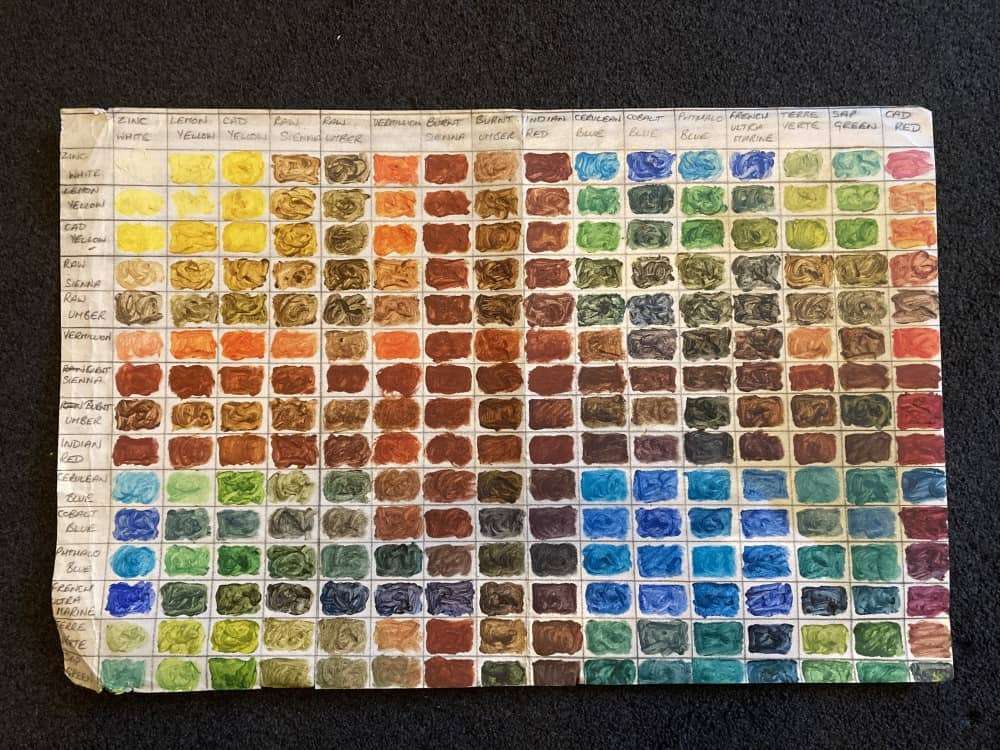
Final Thoughts
Remember, it is in the paint companies interest to sell you as many different colors as possible. This really isn’t necessary. Buying a few high quality colors is better than buying lots of different colors that are poorer quality. If cost of materials is important to you, learn how to mix using a color wheel. You can achieve a myriad of colors from just 5 tubes of paint.
Choose a true yellow a true red and a cobalt blue with a tube of zinc white and ivory black and you have all the colors and tones you will ever need in just 5 tubes of paint. More colors can help you get the colors you want faster. However, learning to mix the exact colors you want from a set of primary colors is great practice and really satisfying.
Spend some time creating color wheels with different blues reds and yellows to see the combinations you get. This will help you decide which is the most useful set of colors for you.
Some tube colors are basic to understand. A true Chrome yellow is a very rich deep color, a Chrome yellow hue paint is simply a Chrome yellow mixed down with white. You can mix any color with Chrome yellow and white that you can with Chrome yellow hue. However, you cannot remove the white from Chrome yellow hue paint, so for me, I would always choose the Chrome yellow. It means if I need to I can add white for a lighter shade, but it always gives me more options than the tube of Chrome yellow hue can

